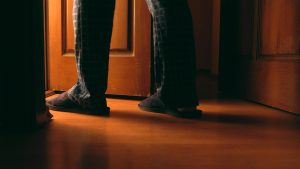When the weather is hot in summer, the shells of capsule-type vitamin D drops, such as Star Shark Vitamin D, become soft to the touch. In this case, will the vitamin D drops become ineffective? Do you want to put it in the refrigerator? Today we will talk about the preservation of vitamin D drops.
01 Vitamin D Drops Preservation.What temperature do you want?
Various medicines and supplements have specific storage requirements because the active ingredients in medicines are affected by external factors such as temperature, humidity, and light. Various vitamin D drops are commonly used, including capsule type (such as Star Shark brand), drop type (such as Canadian Ddrops), and dropper/measuring tube type (such as Australian Ostelin). Storage instructions are as follows:
Star Shark Vitamin D:
Protect from light and seal. There is no specific mention of storage temperature in the instructions.
CanadaDdrops:
Store between 5-30 degrees (i.e. regular room temperature). The official website also mentions that it does not need to be refrigerated, keep it dry, and tighten the cap after each use.
AustraliaOstelin:
Store in an environment below 25 degrees. Refrigerate after opening
Taken together, the ideal storage conditions for various types of vitamin D drops are: cool (for example, below 25 degrees) and dry environment, no need for refrigeration, light shielding, and sealing.
02 In summer, the room temperature occasionally reaches 30 degrees Celsius
Should you worry about vitamin D loss?
Generally don’t worry too much.
The instructions for various supplements have specific guidance and instructions on temperature. It is ideal to always store in strict accordance with the conditions in the product instructions. However, from a practical perspective, in hot weather, the room where vitamin D drops are stored may exceed 30 degrees for some periods of time.
Although it is not the ideal storage condition mentioned in the instruction manual if it exceeds 30 degrees, there is usually no need to worry about failure because vitamin D is actually relatively stable under hot and cold conditions.
Some foods that are naturally rich in vitamin D, such as salmon, are still rich in vitamin D after being frozen or cooked and are not seriously affected by freezing or cooking.
Regarding vitamin D naturally occurring in food or artificially fortified vitamin D, there have been studies in the past on concentration changes after high-temperature cooking. for example:
A 2019 study found that the vitamin D content of vitamin D-fortified canola oil did not change significantly after heating it at 100 degrees for 30 minutes. After heating at 150 degrees for 30 minutes, the final remaining vitamin D is 67.5%-72.97%; after heating at 180 degrees for 30 minutes, the final remaining vitamin D is 33.16%-40.35%.
A 2013 study found that 39-45% of the vitamin D in eggs and margarine remained after being baked at high temperature in the oven for 40 minutes. If eggs are boiled in water, 86-88% of vitamin D is retained.
Compared with the temperature conditions of 100 degrees or even more than 100 degrees, if vitamin D drops are placed at room temperature, even if it exceeds 30 degrees in certain periods, according to theoretical reasoning, there is no need to worry too much about failure. What’s more, raising children is not about scientific research. Children should be supplemented with vitamin D every day. The “error” of a small amount of loss may not be completely avoided. The most important thing to do is to supplement the child with an appropriate amount of vitamin D every day.
To sum up, if you encounter extreme weather and the indoor temperature exceeds 30 degrees, you can put vitamin D in the air-conditioned room at home. If there may be no one at home during the day and the air conditioner will not be turned on, try to find the coolest and driest corner of the house to store vitamin D. There is really no guarantee. There may be a few hours when the room temperature exceeds 30 degrees, so don’t worry too much.
03 I’m really worried,Can it be kept in the refrigerator?
As mentioned before, vitamin D drops do not need to be refrigerated; if they must be refrigerated, the problem of high temperature may not be so worrying, but the problem of humidity also arises.
The refrigerator is a relatively humid environment. For drop-type or dropper-type vitamin D drops, no matter how tightly the bottle cap is tightened, there is no guarantee that it will not be affected by humidity in the humid environment of the refrigerator. Of course, for capsule vitamin D that is completely sealed and stored independently, there may be less concern about humidity. Ostelin recommends refrigeration after opening.
04 Save process.What is easily overlooked is shading
Vitamin D remains relatively stable under high temperature conditions, but is slightly sensitive to light. This is why everyone saw in the instructions for Star Shark Vitamin D that the storage conditions are specifically mentioned: shading.
As the name suggests, shading is to block light and preserve it in a dark place. You may be curious as to why there is no mention of shading in the storage conditions of Ddrops and Ostelin. That’s because the bottles of these two vitamin D drops are dark brown, which is a condition for blocking light.
The Star Shark Vitamin D capsules, one after another, look like the picture below after being opened. If left directly like this, they will be affected by natural light. Therefore, after taking it out, remember to put the remaining capsules back into the light-shielding bag (as shown below).
I will share here about the storage of vitamin D drops. I hope it will be helpful to everyone. Please also share it with more parents so that we can become knowledgeable and knowledgeable parents together.




